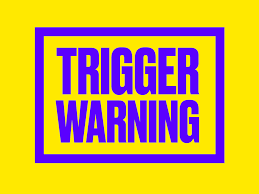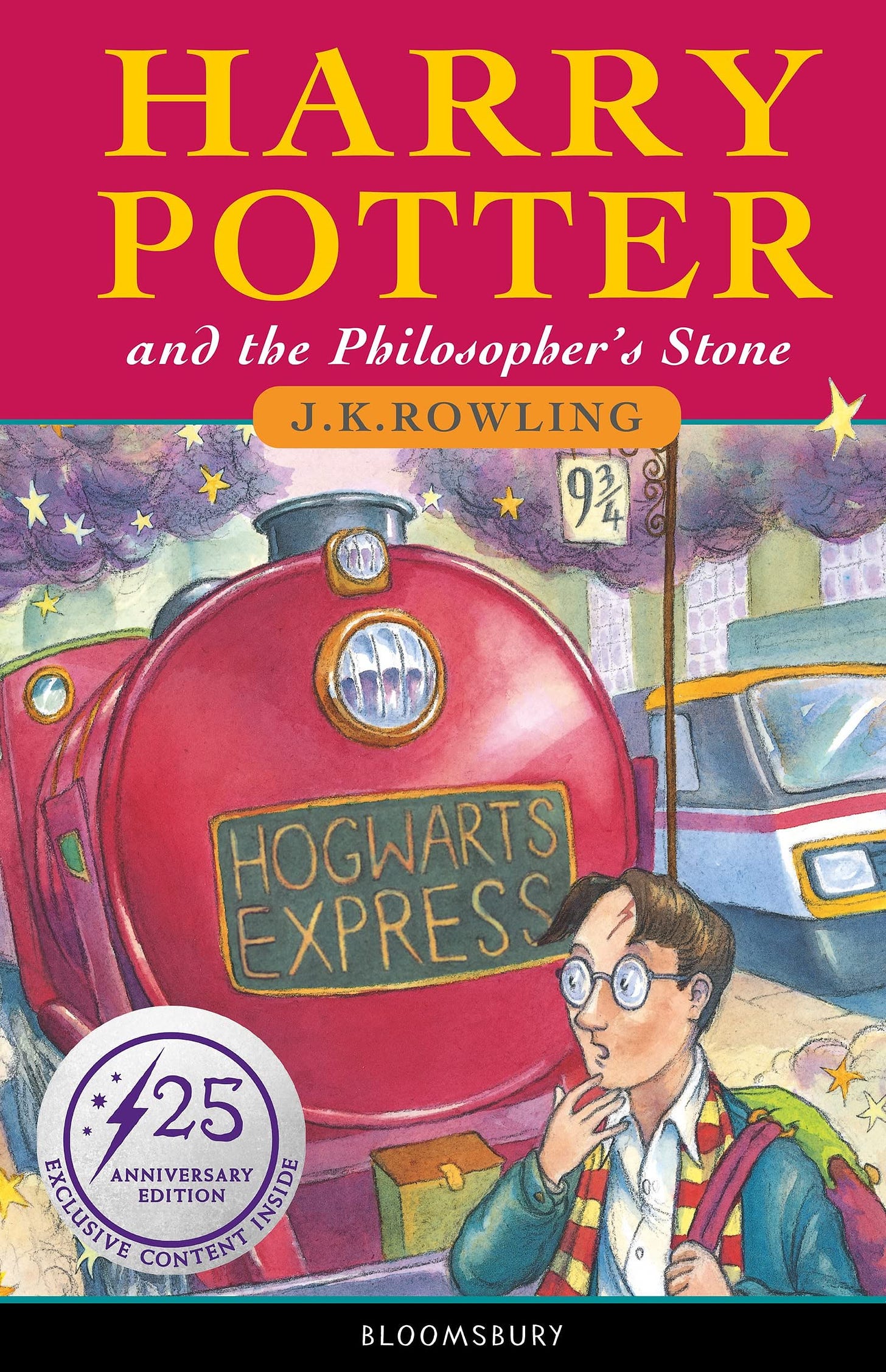They Even Turned Reading Into A Health Problem
Why? So they can instruct you what to think how you should feel.
Do Thinking And Feeling Require A Health Warning?
Why The Medicalisation of Reading Leads To The Infantilisation Of The Reader.
Almost imperceptibly, the act of reading literature has become medicalised and reframed as a risk to mental health. It all happened very, very fast. Health warnings about the risk of reading – called trigger warnings – gained prominence during the second decade of this century.
The application of trigger warnings expanded and became used extensively by bloggers who wanted to signal that they were discussing sensitive and highly charged subjects such as death, suicide, rape, or drug addiction. Increasingly it was also used as a medium for making a political declaration. Warnings that a text would contain statements by homophobes, racists or bigots appeared with the ostensible aim of protecting readers who would be triggered or traumatised by such views. The media publicity given to these alerts gave it prominence, summed up by an article in Slate, which designated 2013 as ‘The Year of the Trigger Warning’!
The idea that reading can be traumatising and represents a potential threat to mental health quickly caught on within the university sector, where the studying of literature became thoroughly medicalised. The medicalisation of reading converged with the mood of censoriousness on campuses. Soon, campaigners insisted that students should not be expected to read Virginia Woolf’s Mrs Dalloway or F. Scott Fitzgerald’s The Great Gatsby unless these novels come with a Trigger Warning. One Rutgers University undergraduate stated that Dalloway could trigger ‘painful memories for students suffering from self-harm’. He also suggested that the warning ‘suicide, domestic abuse and graphic violence’ should be attached to Great Gatsby.
Even ancient classic texts became the targets of the trigger-warning crusade. Student activists at Columbia University demanded that a trigger warning should be attached to the classical Greek poem, Ovid’s Metamorphoses, arguing that ‘like so many texts in the Western canon, it contains triggering and offensive material that marginalizes student identities in the class room’. Their call for policing the reading of this Greek classic was justified on the grounds that such texts ‘can be difficult to read and discuss as a survivor, a person of color or a student from a low-income background’.
In 2014, when the trigger warning craze took off on campuses, many academics believed that this was a silly fad that would soon end. I still remember when I gave a talk on tolerance in Tilburg in Holland, some students dismissed trigger warnings as a stupid American idea. When I raised concerns about the corrosive impact of trigger warnings on academic life, many colleagues criticised me for making a big deal about something that would soon disappear. They evidently failed to grasp the powerful momentum driving the medicalisation of public life.
Forward to the year 2022, and the medicalisation of reading has reached a point where literally anything can be branded as triggering and, therefore in need of a health warning! These days trigger warnings are issued to warn readers of children’s stories and fairy tales. In its wisdom, the University of Chester raised the alarm about Harry Potter and the Philosopher's Stone. It issued a trigger warning on the ground that it could ‘can lead to some difficult conversations about gender, race, sexuality, class, and identity. With these words, the very essence of a good academic education – having ‘difficult conversations’ – was turned into a problem of health.
The University of Aberdeen advised students that Classic Fairy Tales contain ‘cruelty to animals and animal death’! Just to demonstrate its commitment to the policing of reading, it issued more than 30 warnings on its Lost Gods and Hidden Monsters of the Celtic and Germanic Middle Ages module. It warned that ‘texts studied on this course contain representations of violence, coercion, animal cruelty or animal death, incest, suicide, explicit sexual content… ableism’. As if it was performing an act of self-parody, it warned ‘there will also be monsters’! Its evocation of monsters illustrates that one of the accomplishments of trigger warnings is the infantilisation of students.
There is something truly surreal about the perfunctory manner in which just about any novel and poem can be designated a health problem. The University of the Highlands and Islands has decided to warn students that Ernest Hemingway’s The Old Man and the Sea contains ‘graphic fishing scenes’. If even an exciting fishing scene can be assigned a health warning, it becomes evident that the imperative of medicalisation has acquired a momentum of its own.
The project of medicalising the risks of reading and attaching trigger warnings to literature and course material indicate how the ideology of medicalisation assists the regulation of the curriculum. When readers are warned that a particular book contains scenes that they may find upsetting, they are, in effect, being instructed about what to feel and what to think. George Orwell, the author of the dystopian novel 1984, understood better than most the danger posed by the policing of thought. That is why it should not come as a surprise that 1984 has also become the target of a trigger warning. Staff at the University of Northampton warn students that 1984 contains ‘explicit material’, which some may find ‘offensive and upsetting’. Greenwich University also warns that Orwell’s 1984 contains ‘self-injurious behaviour, suicide and animal cruelty’.
The medicalisation of reading leads to the infantilisation of readers
The adult world often underestimates the powerful impact of the medicalisation regime on young people's outlook. Former English Education secretary Michelle Donelan recently stated that the Harry Potter warning was a ‘disservice’ to students. She added, ‘I’ve not met students who have called for these trigger warnings either’. Unfortunately, many students take a different view of this issue. A 2022 survey of 1000 undergraduates found that 86 per cent support trigger warnings – up from 68 per cent in 2016. The survey indicated that a growing number of students have internalised a medicalised outlook on the world and therefore believe that their health and safety require more controls on free expression!
What’s fascinating about the advocacy of trigger warnings in universities is that it represents the first time young students are demanding the moral policing of their reading material. ‘Trigger warnings must be a regular practice in lectures and seminars’ demanded a student occupation in Goldsmith College, London[. Students protesting to be told what is and what is not disturbing in a text is an astonishing development in campus politics. In effect, the request for the institutionalisation of trigger warnings represents a demand for guidance about how to think and feel about a text.
Supporters of Trigger Warnings justify their case for regulating reading in the language of medicine. They insist that students who encounter distressing episodes in their course books may suffer lasting psychological damage from their reading.
The censorious impulse driving the trigger-warning crusade has little time for uncertainty and regards literary content that is upsetting or offensive as an unacceptable risk to individual health. What is noteworthy about this movement is that, unlike its censorious ancestors, it is not particularly interested in the content of the literary text. Its entire focus is on the potential effect that a book may have on an individual. In a narcissistic culture where ‘it is all about me’ often, the affirmation of ‘my feeling’ is sufficient to reorganise course content around it. The subordination of literary content to the arbitrary emotional reactions of students is likely to have a chilling impact on the quality of campus life. Trigger warnings flatten complexity and discourage navigating difficult and subtle issues integral to pursuing knowledge and wisdom in academic life.
Once people become accustomed to being told what to expect from a text and the impact it would likely have on their emotions, reading ceases to be a voyage of discovery. It also diminishes the capacity for cultivating the independence of thought that comes from gaining meaning through an unguided exploration of the text.
On one point, the movement for the imposition of trigger warnings is absolutely right. As I argue in my study, The Power of Reading: Socrates To Twitter reading is indeed a risky activity! Reading possesses the power to capture the imagination, create emotional upheaval and force people toward an existential crisis. Certainly, for many people, the excitement of embarking on a journey of the unknown attracts them to pick up a book. ‘Can one read Anna Karenina or Proust without experiencing a new infirmity or occasion in the very core of one's sexual feelings’ asked the literary critic George Steiner1. It is precisely because reading catches us unaware and offers an experience that is rarely under our full control that it played and continues to play such an important role in humanity’s search for meaning.
Trigger warnings represent a censorious impulse far more insidious than the classical form of policing the text. Advocates of trigger warnings are not censoring content but relieving individuals from assuming the burden of responsibility for dealing with the uncertainties thrown up by the text. Emptying the practice of reading of meaning is the ultimate outcome of the medicalisation of the text.
Steiner, G. (1985) Language And Silence: Essays 1958-1966, faber and faber : London, p.29.







Thanks for this! Imagine the field day advocates of trigger warnings would have with the text of Genesis. Perhaps we should all crawl backwards into the garden of Eden and avoid free will altogether.
Too true!